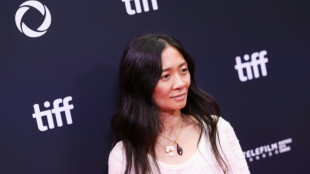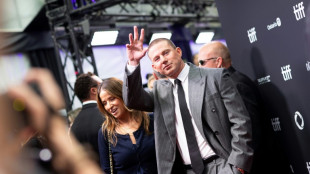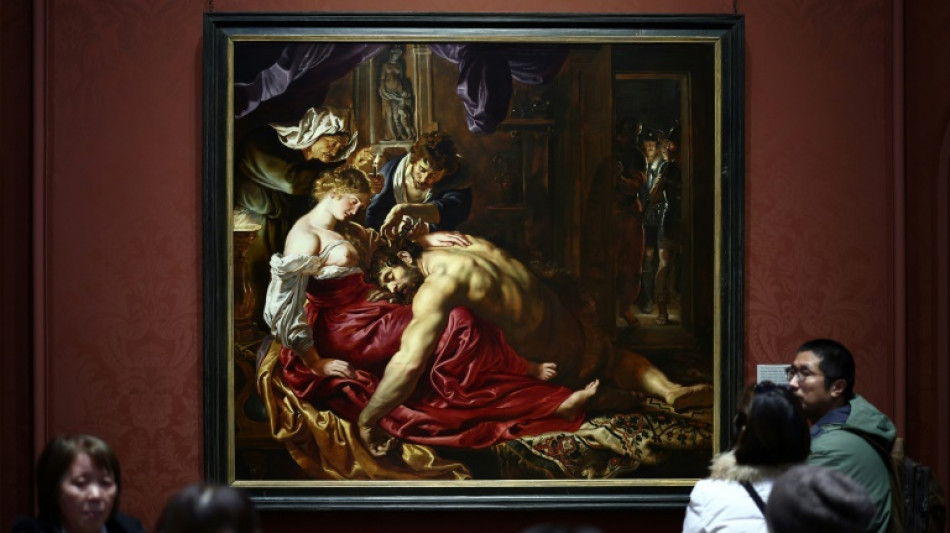
-
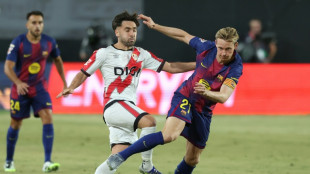 De Jong joins Barca sickbay after picking up knock on international duty
De Jong joins Barca sickbay after picking up knock on international duty
-
BRICS leaders denounce protectionism, tariff 'blackmail'
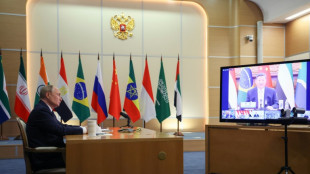
-
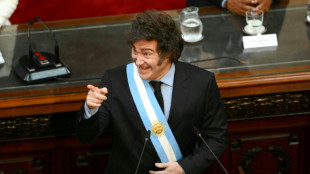 Argentina's Milei to join far-right rally in Madrid
Argentina's Milei to join far-right rally in Madrid
-
Germany's VW, China's BYD face off at Munich auto show

-
 Teen arrested after two Turkish police officers shot dead
Teen arrested after two Turkish police officers shot dead
-
Lawyers caught in Turkey's crackdown on opposition
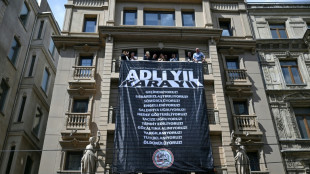
-
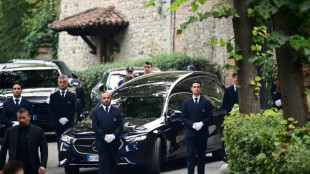 Private hometown funeral for Italian fashion legend Armani
Private hometown funeral for Italian fashion legend Armani
-
Nepal police open fire, killing 17 protesting social media ban

-
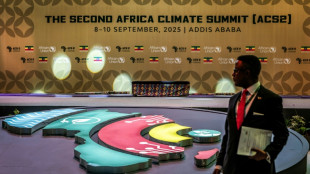 African Union chief calls for more 'climate justice' funds
African Union chief calls for more 'climate justice' funds
-
UN nuclear watchdog says hopes for inspections deal with Iran soon

-
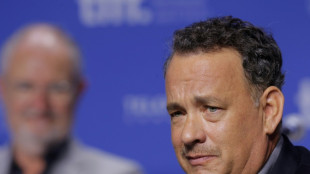 Trump hails cancelation of award ceremony for Tom Hanks
Trump hails cancelation of award ceremony for Tom Hanks
-
VW unveils affordable EVs to take on Chinese rivals

-
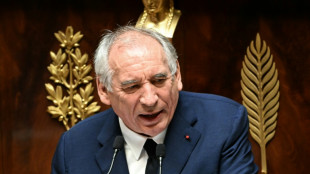 Excessive debt 'life-threatening' for France, PM tells parliament
Excessive debt 'life-threatening' for France, PM tells parliament
-
Tri-series win confidence builder for Pakistan, says coach Hesson

-
 Leverkusen name Hjulmand as Ten Hag replacement
Leverkusen name Hjulmand as Ten Hag replacement
-
Appeal trial of France's Le Pen to begin in January 2026: court
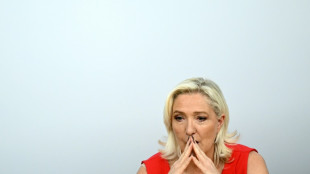
-
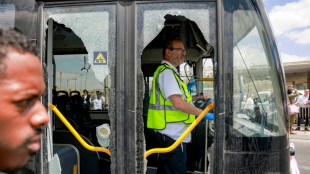 Palestinian gunmen shoot dead six people in east Jerusalem attack: foreign minister
Palestinian gunmen shoot dead six people in east Jerusalem attack: foreign minister
-
At least 16 killed in Nepal protest over social media ban

-
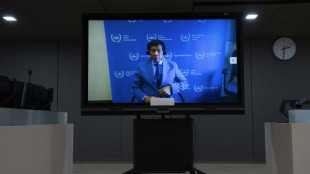 International court postpones hearing on Duterte's drug crackdown
International court postpones hearing on Duterte's drug crackdown
-
New Banksy artwork challenges UK's protest crackdown
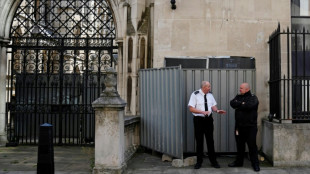
-
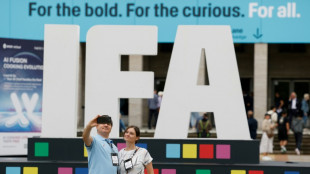 At consumer tech show, German firms fret about US tariffs
At consumer tech show, German firms fret about US tariffs
-
At least 10 killed in Nepal protest over social media ban
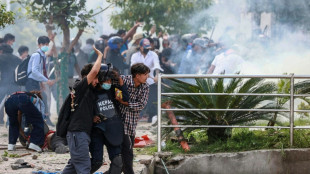
-
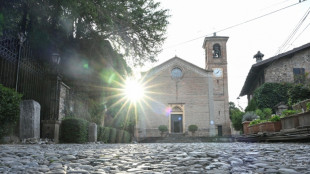 Hometown funeral for Italian fashion legend Giorgio Armani
Hometown funeral for Italian fashion legend Giorgio Armani
-
Stocks rise tracking political upheaval, data
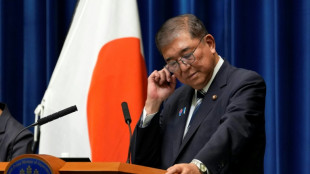
-
 Teen arrested after 2 police shot dead near Turkey's Izmir
Teen arrested after 2 police shot dead near Turkey's Izmir
-
Millions hit as London Underground train workers strike
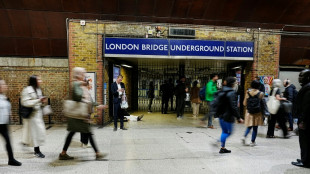
-
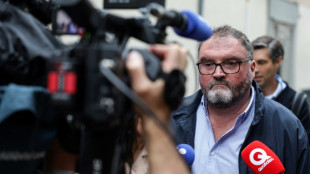 Trial of doctor accused of poisoning 30 patients begins in France
Trial of doctor accused of poisoning 30 patients begins in France
-
Thai ex-PM Thaksin lands in Bangkok ahead of crucial court date

-
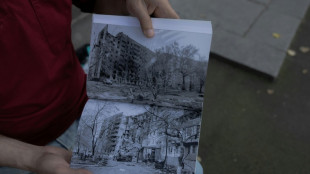 Ukraine's Donbas refugees don't want to be sacrificed for peace
Ukraine's Donbas refugees don't want to be sacrificed for peace
-
Norway votes in tight election where war and tariffs loom large

-
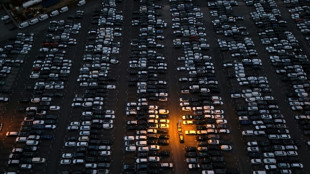 Germany's US exports hit four-year low as tariffs bite
Germany's US exports hit four-year low as tariffs bite
-
Israel warns Hamas to surrender or face 'annihilation'

-
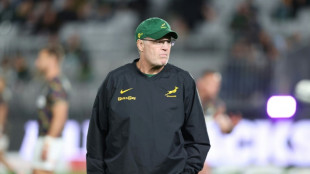 Erasmus makes seven Springboks changes for All Blacks rematch
Erasmus makes seven Springboks changes for All Blacks rematch
-
French doctor accused of poisoning patients sounds defiant ahead of trial
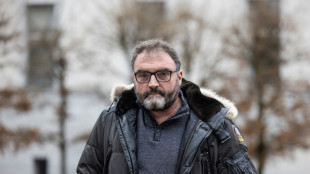
-
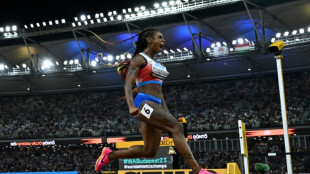 Controversy stalks sparkling sprint talent Richardson
Controversy stalks sparkling sprint talent Richardson
-
Ariana Grande wins top MTV Video Music Award
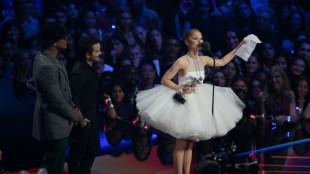
-
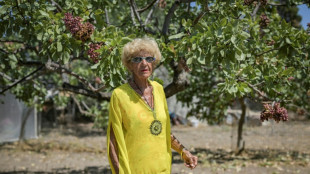 'Last generation': Greek island's fading pistachio tradition
'Last generation': Greek island's fading pistachio tradition
-
China 'elephant in the room' at fraught Pacific Islands summit
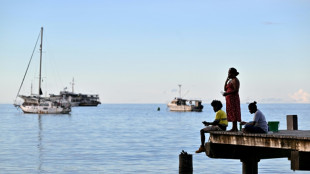
-
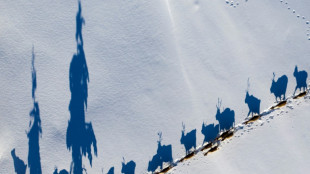 Sweden's Sami fear for future amid rare earth mining plans
Sweden's Sami fear for future amid rare earth mining plans
-
'Trump Whisperer' ex-minister joins Japan PM race
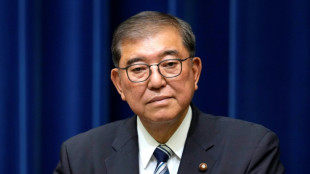
-
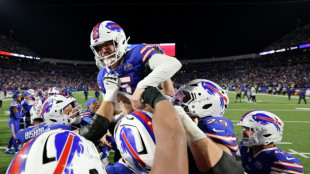 Bills rally to stun Ravens, Stafford hits milestone in Rams win
Bills rally to stun Ravens, Stafford hits milestone in Rams win
-
ICC to hear war crimes charges against fugitive warlord Kony

-
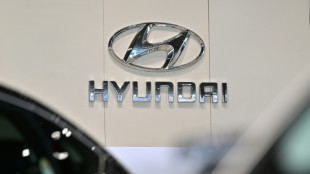 Trump warns foreign companies after S.Korean workers detained
Trump warns foreign companies after S.Korean workers detained
-
Asian shares rise as Japan politics weigh on yen

-
 Norway votes in election influenced by wars and tariff threats
Norway votes in election influenced by wars and tariff threats
-
French parliament set to eject PM in blow to Macron

-
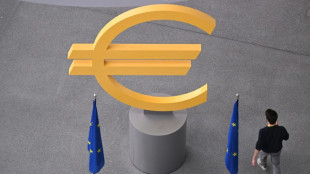 ECB set to hold rates steady with eye on France crisis
ECB set to hold rates steady with eye on France crisis
-
Russell Crowe shaken by Nazi role in festival hit 'Nuremberg'

-
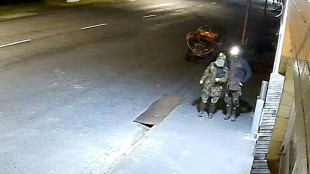 New Zealand fugitive father killed in shootout with police
New Zealand fugitive father killed in shootout with police
-
Trump threatens Russia with sanctions after biggest aerial attack on Ukraine
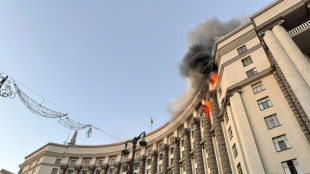
| RBGPF | 5.95% | 76 | $ | |
| RYCEF | 1.08% | 14.78 | $ | |
| CMSC | 0.08% | 24.25 | $ | |
| AZN | -0.9% | 80.97 | $ | |
| SCS | -0.38% | 17.075 | $ | |
| RIO | -0.49% | 63.655 | $ | |
| GSK | -1.66% | 39.84 | $ | |
| RELX | 0.24% | 47.165 | $ | |
| NGG | -0.31% | 69.88 | $ | |
| BTI | 0.13% | 56.095 | $ | |
| VOD | -0.3% | 11.775 | $ | |
| BCC | -1.75% | 88.47 | $ | |
| JRI | 0.77% | 13.725 | $ | |
| CMSD | -0.08% | 24.44 | $ | |
| BCE | -1.75% | 24.295 | $ | |
| BP | 0.09% | 33.96 | $ |

'Fake' Rubens masterpiece debate reignited by new book
Gaudy colours, messy brushwork, even a set of missing toes. The debate about the authenticity of a Rubens's masterpiece "Samson and Delilah" will be reignited next week with the release of a book alleging the painting hanging in London's National Gallery is really a copy.
The work by the 17th century Flemish master Peter Paul Rubens was purchased by the gallery in 1980 for £2.5 million ($3.1 million), then the second-highest price ever paid for a painting at auction.
Every year tens of thousands of visitors view the work, lauded by the world-famous gallery for the artist's use of "highly contrasting light and shade and deep rich colour work".
It's not a view shared, however, by Greek painter and art historian Euphrosyne Doxiadis whose book "NG6461: The Fake Rubens" comes out next week.
Although the National Gallery remains convinced of the painting's authenticity, Doxiadis is adamant that it cannot have been painted by Rubens.
"Rubens was meant to have painted a Samson and Delilah... (but) this painting in the National Gallery is certainly not it," she told AFP by telephone from Greece.
Based on the Old Testament story of the Israelite hero Samson, the painting depicts the moment an accomplice of his treacherous lover Delilah cuts off his hair, the source of his warrior power.
Rubens completed the canvas around 1609, but it mysteriously went missing for nearly three centuries before resurfacing in Paris in 1929.
After changing hands, it was eventually resold to the National Gallery
Doxiadis, 78, said she "instantly" spotted problems with the painting on seeing it four decades ago.
- 'Detective' hunt -
"In 1985, I was wandering around alone and I saw it and I thought it was just a bad copy that they'd borrowed," she said.
Doxiadis, who studied at London's Slade School of Fine Art, said the painting's "cartoon" colours were the biggest red flag.
"Above all it was the lack of colour harmony, it was just gaudy... (and) the drawing, the composition were totally out of sync," she said.
"Also I didn't notice at the time but the foot of Samson is out of the picture -- the toes are missing," she said, adding: "It's a joke!"
Her theory is consistent with previously expressed doubts.
Contemporaneous reproductions show three soldiers in the doorway rather than the five in the National Gallery work.
It was several years after she first laid eyes on "Samson and Delilah" that Doxiadis learned that far from being an acknowledged copy, the painting had been acquired by the London institution for a vast sum.
That discovery so shocked her that she launched a 40-year "detective" hunt.
"When I started this whole research I never thought I'd be lucky enough to find out who painted this copy but I did," she said.
Her findings point to the work of three separate hands at the San Fernando Fine Art Royal Academy in Madrid.
- 'Dictatorship of experts' -
"It had become one of the rules of the academy that the students would do copies from old masters. It began in the early 19th century and went on until around 1910," she said.
Doxiadis said it was not intended to be a fake but after it was sold in Paris in good faith, the new owner succeeded in having it "authenticated" by an expert, sealing its status as an original "masterpiece".
Publishers were reluctant to take Doxiadis's book on although the independent London-based Eris press, distributed by Columbia University Press, eventually came to her rescue.
"There's a dictatorship of experts ... Everyone was closing doors because they didn't want to get involved with something so controversial."
The publicly owned National Gallery has not reacted to the book although it told AFP in a statement the work had "long been accepted by leading Rubens scholars as a masterpiece by Peter Paul Rubens".
"A technical examination of the picture was presented in an article in the National Gallery's Technical Bulletin in 1983. The findings remain valid," it added.
Doxiadis said she remained motivated by a sense of outrage on behalf of the artist and concern that the price tag had been funded by taxpayers' money.
"NG6461: The Fake Rubens", whose title refers to the painting's inventory number, will be published on Wednesday.
T.Ward--AMWN
